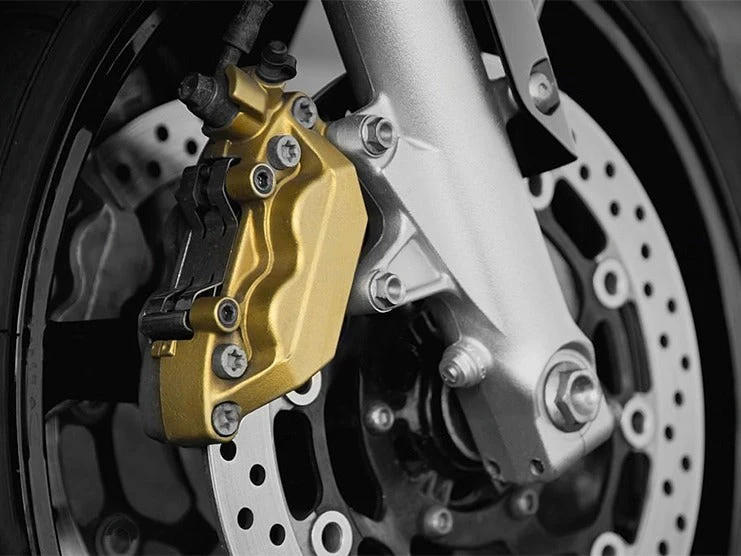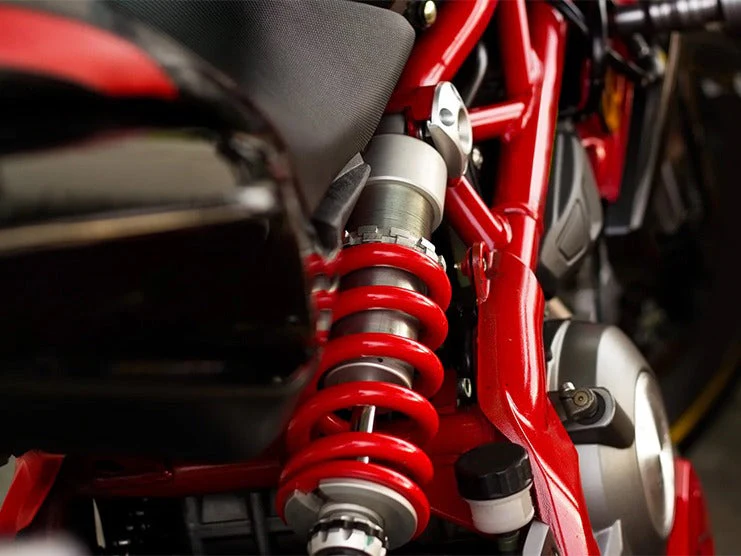Table of Content
Brake calipers are motorcycle parts that are close to the road. Much like tires, brake calipers also become exposed to dust and water, resulting in them becoming rusted. Rust can reduce the lifespan of a brake caliper and can ruin your motorcycle’s overall look.
You can customize your motorcycle brake calipers by painting them. Good-quality paint also helps prevent your brake calipers from being affected by the environment, ensuring they last longer and preventing rusting.
Also Read: How to Paint Motorcycle Tires
1. Why Paint Motorcycle Calipers?
Painting your brake calipers can give your motorcycle a nice look and also some practical advantages:
- Paint can help prevent your motorcycle brake calipers from becoming damaged, rusty, or dirty.
- Painted calipers are easier to clean than exposed calipers.
- Painted calipers cool more quickly than rusty and dusty calipers.
- Heat-resistant paints also help reduce the temperature of brake calipers.
Also Read: How to Paint Motorcycle Rims
2. Best Paint Types for Motorcycle Calipers
Depending on the type of paint you apply to motorcycle brake calipers, they may be able to fulfill various purposes. It is best to use good-quality paint that is long-lasting, offers protection, and has other benefits.
When picking paint for motorcycle calipers, make sure they have the following properties:
- Acrylic paints are the better choice for painting motorcycle brake calipers than lacquer or enamel paints. However, acrylic paints lack a shiny and glossy look, so a mix of acrylic and enamel paints are used more often. Enamel paints are famous for their glossy look and acrylic paints are long-lasting after drying.
- Paint sprays are usually used to color motorcycle brake calipers. They can be spread evenly across the entire surface and can reach hard-to-reach places.
- Paint must be heat-resistant, able to withstand at least 100℃. High temperatures can reduce the lifespan of the brake calipers. Since motorcycle brake calipers are made of metal and can be exposed to high temperatures on the road, heat-resistant paints can help prevent the brake calipers from heating up.
- Paint should not contain any heavy metals like lead, cadmium, etc. If you paint your brake calipers with paint containing heavy metals, any scratches in the paint could become rusted.
- Paint has to be able to be applied to every part of the caliper.
- Paint must be affordable and can dry quickly. It is not necessary to have expensive paint to ensure better quality. Good-quality paints can come at affordable prices.
- Paint must have durability, weather resistance, and be highly adhesive.
3. The Process of Painting Motorcycle Brake Calipers

3.1 Required Tools to Paint Motorcycle Brake Calipers
Required tools for painting motorcycle brake calipers include the following:
- Sandpapers
- Wrenches
- Sockets
- Brake piston removal tool
- Brake cleaner
- Good-quality paint
- Lacquer
3.2 Remove the Brake Calipers from the Tires
Some people prefer to paint the brake calipers without removing them from the brakes. But this makes it impossible to clean and paint all the brake caliper parts. To paint them properly, you must remove the calipers from your motorcycle tires.
Furthermore, painting the calipers while still connected to the tires can also cause paint to get onto parts of the tires. If you paint the brake calipers after removing them, then reinstall them back into place when finished, it will give your motorcycle a nice look.
- To remove the brake calipers from the tires, first remove the brake pads. To disconnect the brake pads, remove the pins and anti-rattle shims.
- Tighten the banjo bolt with a spanner.
- To remove the piston, use the piston removal tool. After removing the piston, carefully drain the brake oil.
- You can then disconnect the brake calipers from the brake line.
3.3 Clean and Prepare Your Calipers for Paint
- After removing the brake calipers from the brake line, use brake cleaner to clean off rust and dust from them.
- Spray the brake calipers with brake cleaner and clean it with a brush. You can use a toothbrush to reach all the parts of the calipers.
- You can clean the pistons with dry sandpaper.
- If you are repainting the brake calipers, you should also remove the previous paint to ensure the new paint is properly applied. To remove the peeling paint from the calipers, you should also use sandpaper.
3.4 Paint Your Brake Calipers
- First, choose the color of the paint. Check which colors are on your motorbike. Most motorbikes usually come in black or silver. After deciding which color will best suit your bike, buy good-quality paint of that color.
- Before painting the brake calipers, coat them with primer. Primer helps the paint stick better on the calipers.
- Now spray good-quality paint onto the brake calipers. Good-quality paints stay on the brake calipers longer and protect them from the environment.
- After spraying properly, give the calipers a finishing touch by spraying lacquer on them.
- Leave them for 30 minutes to one hour to dry. The time it takes to dry depends on the paint type.
- After drying, apply another coat and also leave it to dry.
3.5 Reinstall the Brake Calipers
If you removed the brake calipers, reinstall them back onto the tires at this point. Make sure to tighten the pistons and affix the brake calipers in the right position.
3.6 Check Your Brakes with a Test Drive
After reinstalling the calipers, it is best to go on a test drive to check for any problems with the brakes.
4. Conclusion
Painting the motorcycle brake caliper can be easy and beneficial since it can protect them from the elements and increase their lifespan. To paint brake calipers, removing them from the tires will help make the process easier. However, it is possible to paint them while they are still connected to the tires.
Heat-resistant paints can also help prevent the calipers from being affected by high temperatures during long rides. After painting and reinstalling the calipers, a test ride can help identify any issues before they can an accident in the future. There are many aftermarket parts and luggage bags available at Viking Bags including saddlebags, sissy bars, crash bars, handlebars, seats, backrests, and fairings.













Leave a comment
All comments are moderated before being published.
This site is protected by hCaptcha and the hCaptcha Privacy Policy and Terms of Service apply.